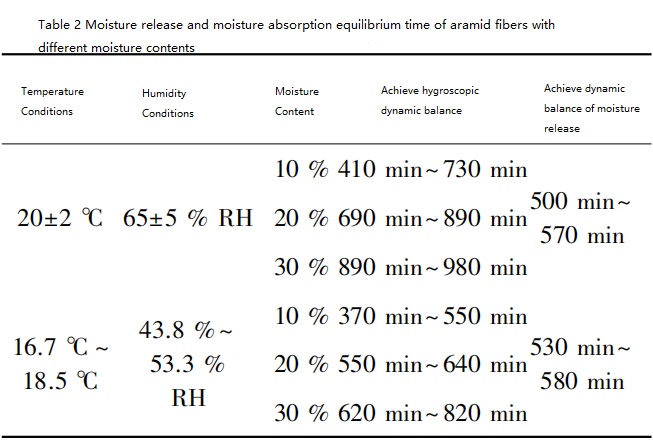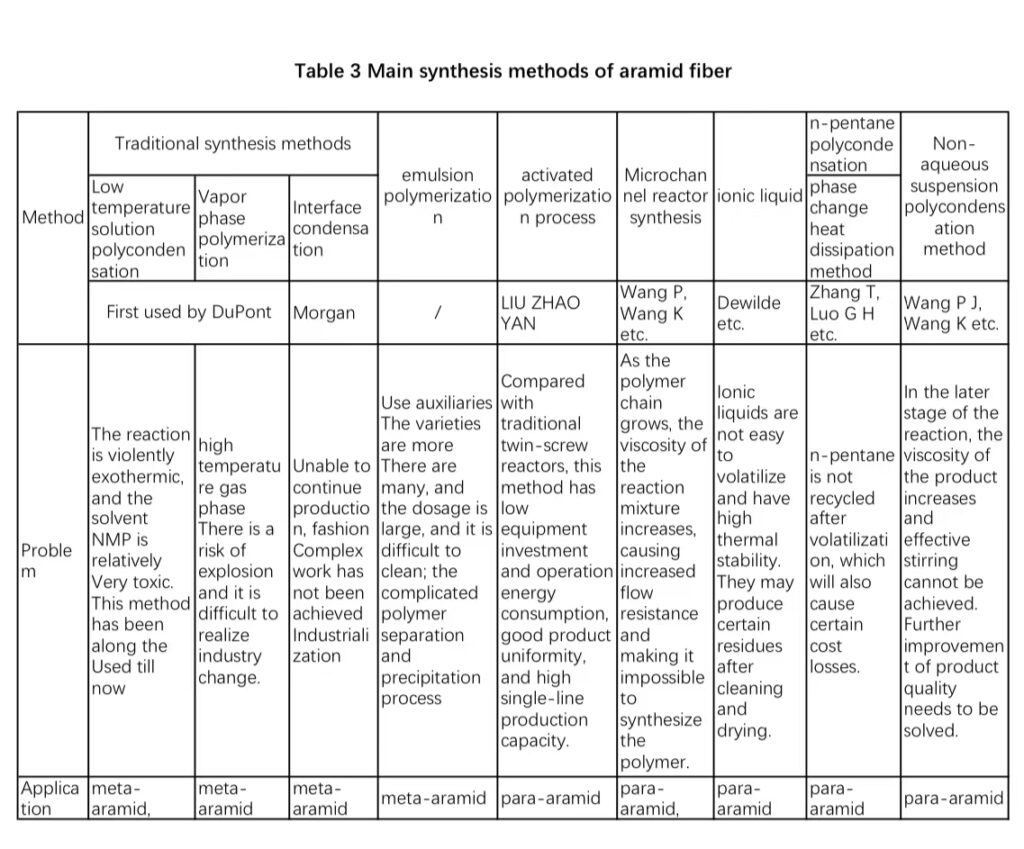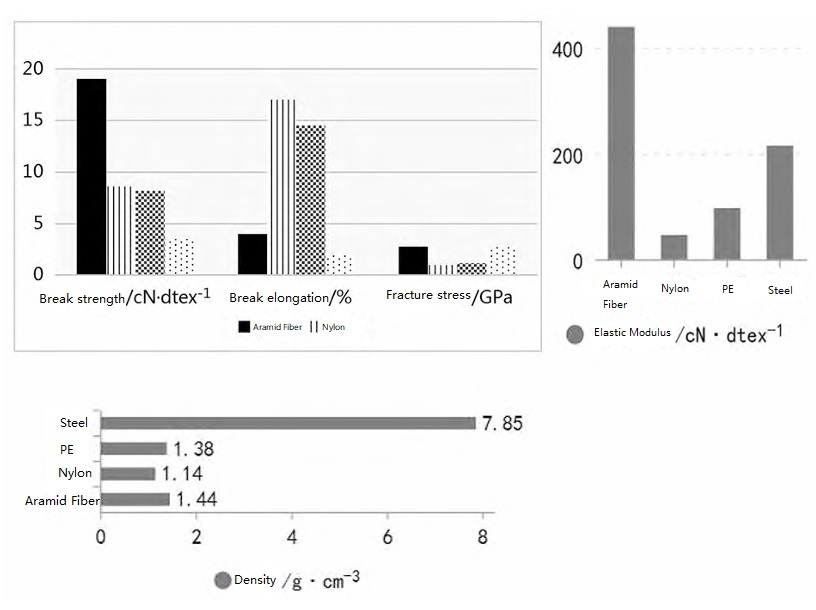Summary:This paper summarizes the performance, modification research, dyeing and printing performance research and development status of aramid fiber, as well as the application and research of aramid fiber in metallization, sports, flexible stab-proof and bulletproof materials, aerospace materials, etc.
The full name of aramid fiber is aromatic polyamide fiber (aramid). It is a fiber composed of linear macromolecules composed of aromatic groups connected by imide bonds or amide bonds. At least one of them is directly connected to two aromatic rings. 85% of imide bonds or amide bonds, and when imide bonds exist, their value does not exceed the number of amide bonds. Aramid fiber has excellent flame retardancy, heat resistance, high toughness, high modulus and excellent insulation ability. It is a high-performance fiber. After years of research and development, aramid fiber has been commercialized and used in the military industry. National defense, aerospace, transportation, energy communications, environmentally friendly building materials, protective equipment, sports equipment, paper manufacturing and other fields. Although my country’s aramid companies are still unable to compete with Teijin and DuPont due to technological blockades, through continuous research by domestic technical personnel, China has achieved localization of all para-aramid specifications and varieties, including high-modulus and high-strength para-aramid. In 2020, China will achieve an annual output of 29,000 tons of aramid fiber, mainly based on the two most classic products – meta-aramid fiber (PMIA) (market share 80%) and para-aramid fiber (PPTA). At the same time A breakthrough in the preparation technology of ultra-high-strength para-aramid fiber that can be used in military bulletproof helmets. The backbone enterprises of kiloton-level para-aramid in my country mainly include Tayho New Materials (of which meta-aramid ranks second in the world), Sinochem International, SINOARA, Blue Star New Materials, Yizheng Chemical Fiber, and Ruisheng New Materials. Aramid fiber is one of the important varieties of China’s key strategic materials.
1. Structure and properties of aramid fiber
1.1 The structure of aramid fiber
The structure, synthesis method and advantageous performance comparison of two common aramid fibers are shown in Table 1.

During spinning, the main chain has such a large conjugated benzene ring, a regular linear rigid structure, and a highly ordered molecular chain. Even in a limited space, the molecular chain of aramid fiber can carry out high-density spinning along the orientation of the fiber. , multi-layer stacking to form a highly oriented, high-strength structure, and there are hydrogen bond cross-links between the molecular chains of aramid fiber, that is, the carbonyl group of one molecular chain can form a hydrogen bond with the hydrogen of the amide group of another molecular chain. Microfiber structure, sub-crystalline structure and skin-core structure are all supramolecular structural forms of aramid fiber. For the skin-core structure, the crystallinity of the skin layer is small (thickness 0.1 μm ~ 1 μm) and the degree of orientation is high (the core layer is single crystal arranged along the fiber axis). The longitudinal molecular orientation is almost parallel to the orientation of the fiber axis, and the axial direction has strong covalent bonds. When the axial force is broken, the structure will split into finer microfiber monofilaments; the transverse direction is the radiation with hydrogen bonding sheets. When a force perpendicular to the axial direction is exerted on the fiber, the force point is delaminated and destroyed. The aramid fiber has anisotropic mechanical properties due to its strong and weak axis and weak longitudinal and transverse strength, and its poor compression and shear properties. Even so, the compressive strength is higher than that of ultra-high molecular weight polyethylene due to the presence of lateral hydrogen bonds in aramid fibers.
Zhang Yaru observed through a scanning microscope that the meta-aramid fibers of three brands, Longbang, Shengqi, and Korea, have relatively smooth longitudinal surfaces. The infrared spectrum showed obvious vibrations of benzene rings and amide bonds, and the orientation degree was 54.2%~ 56.0%, crystallinity 44.5% ~ 54.5%, fiber breaking strength 8.3cN ~ 9.3cN, elongation at break 37.1% ~ 40.3%, initial modulus 40.5cN/dtex ~ 46.6cN/dtex, moisture content under standard atmosphere 7.05 % ~ 7.30%, using pure water and 3.5% sodium chloride to prepare aramid fibers with moisture contents of 10%, 20%, and 30% respectively, the breaking strength decreased by 5.2% ~ 12.7%, 16.0% ~ 21.8%, 21.2% ~ 28.5%. The elongation at break increases with the increase in moisture content. The moisture content increases the most at 2.2% ~ 4.6%. The initial modulus decreases by 5.1% ~ 25.0%, 26.1% ~ 35.3%, and 29.8 respectively. %~50.0%, there is little difference in tensile properties between the two media. Under various conditions, the moisture release and moisture absorption equilibrium times of aramid fibers with different moisture contents are shown in Table 2 below.

Thermal degradation of para-aramid fibers follows second-order reaction kinetics. Yang Chen and others used high-temperature baking of para-aramid and found that the molecular structure and mechanical and thermal properties of para-aramid remained stable below 350°C. After exceeding 350°C, as the temperature increases, the molecular structure of the fiber decreases. Cracking and cross-linking gradually begin to occur, and the mechanical and thermal properties gradually decrease. When the temperature reaches above 450°C, the crystallinity and orientation of the fiber decrease, and the intrinsic viscosity in each direction and the apparent grain size of the crystal plane decrease to varying degrees increase.
1.2 Synthesis of aramid fiber
The main method for synthesizing aramid fibers is the low-temperature solution polycondensation method that is still used today by Teijin Corporation of Japan. There are also many synthetic methods that have been improved on the low-temperature solution polycondensation method in China. For example, Kong Haijuan and others introduced n-hexane to increase the specific surface area of para-aramid fiber. The main synthesis methods of aramid fiber are shown in Table 3.

Research on spinning methods includes liquid crystal spinning technology. Liang Yuan and others used dry-jet wet spinning to produce para-aramid fiber. With an air layer of 12 mm, a coagulation bath of 10% mass fraction, 8°C, and a cluster point height of 45 cm, 1100 dtex para-aramid fiber with mechanical properties and the best appearance can be prepared.
1.3 Properties of aramid fiber
Aramid fiber has excellent mechanical properties, much better than nylon, polyester, and steel wire. The main performance comparison is shown in Figure 1 below.

Figure 1 Comparison of the mechanical properties of aramid fiber with those of nylon, polyester, and steel wire
During the application process, the mechanical properties of the fiber after aging and the performance of acid and alkali solution treatment also need to be studied.
Zheng Youjing and others studied the climate aging of aramid fibers and found that the tensile strength of aramid fibers decreased through artificial aging. The largest decrease occurred just after aging, after 24 hours of constant temperature and humidity conditioning. , the tensile properties gradually stabilize.
Jia Chuyuan and others used artificial accelerated moist heat aging to study the moist heat aging performance of aramid fiber. They found that during the moist heat aging process, aramid fiber basically did not undergo chemical degradation and had no change in molecular structure. Instead, the sheath-core structure of the fiber was degraded by water. Due to molecular penetration, the aggregated structure of the molecular chain segments gradually becomes disordered over time, peeling off the fiber cortex, thus changing the properties of the fiber. The half-peak width of the crystallization peak of 1.45° changes to 7.63°.
Meta-aramid should be avoided in alkaline conditions. Yang You et al. soaked meta-aramid filaments with different contents of DMAC in diluted DMAC solution, sodium hydroxide, and hydrochloric acid solution, and then subjected them to thermal oxidation treatment (300°C). They found that those containing DMAC were higher. After thermal oxidation treatment of meta-aramid fiber, the retention rate of fiber elongation at break and breaking strength retention rate are both low, and the impact on the former is greater than the latter. After thermal oxidation for 750 hours, the fiber with higher DMAC has a lower retention rate. There are obvious holes and cracks on the base surface, and the fracture strength retention rate is 40.06%; the meta-aramid fiber with a higher DMAC content soaked in dilute sodium hydroxide is stronger than the meta-aramid fiber treated with dilute hydrochloric acid and DMAC solution. The retention rate of elongation at break and the retention rate of breaking strength of aramid fiber are much lower. Meta-aramid fiber with lower content of DMAC and meta-aramid fiber soaked in dilute sodium hydroxide after 150 hours of thermal oxidation treatment. , the fiber surface was obviously damaged, and its elongation at break retention rate and elongation at break strength were 27.03% and 52.29% respectively. Zhou Qin and others found that in the presence of aramid fiber in the air, the sizing agent on the surface layer volatilizes at 150 ℃ ~ 200 ℃, and there is no oxidation reaction on the fiber surface. The molecular chains above 250 ℃ are oxidized, and the molecular chains on the surface of the fiber are oxidized due to tight rearrangement and hydrogenation. The bonds are strengthened, and the C-H bonds of the benzene ring of the molecular chain are oxidized into -COOH, -C-OH, and the polarity of the fiber surface is enhanced. After 1 hour and 40 minutes of treatment, the rearrangement of the surface molecules is completed, and the average grain size of the molecules on the surface of the fiber is With increasing heat treatment for 1 hour, the crystallinity increases by 7.88% to the maximum, and the polar oxygen-containing groups can improve the interfacial bonding with epoxy resin, and the interfacial shear strength increases by 11.9% to 18.05 MPa. The single-filament tensile strength of the fiber changes little after heat treatment. After heat treatment for 2 hours, the tensile strength increases by only 3%. After heat treatment at 300°C, the surface molecular chains of the para-aramid fiber move, rearrange, and shrink, and the crystallinity increases, increasing the tensile strength of the single-filament fiber by 4.9%. The fiber molecular chains are oxidized; after heat treatment at 350°C, the surface molecular chains Cross-linking and shrinkage occur, and the molecular chains on the surface of the fiber are also oxidized; under heat treatment conditions of 300 ℃ and 350 ℃, obvious molecular chain decomposition occurs at the same time as the molecular chain breaks.



